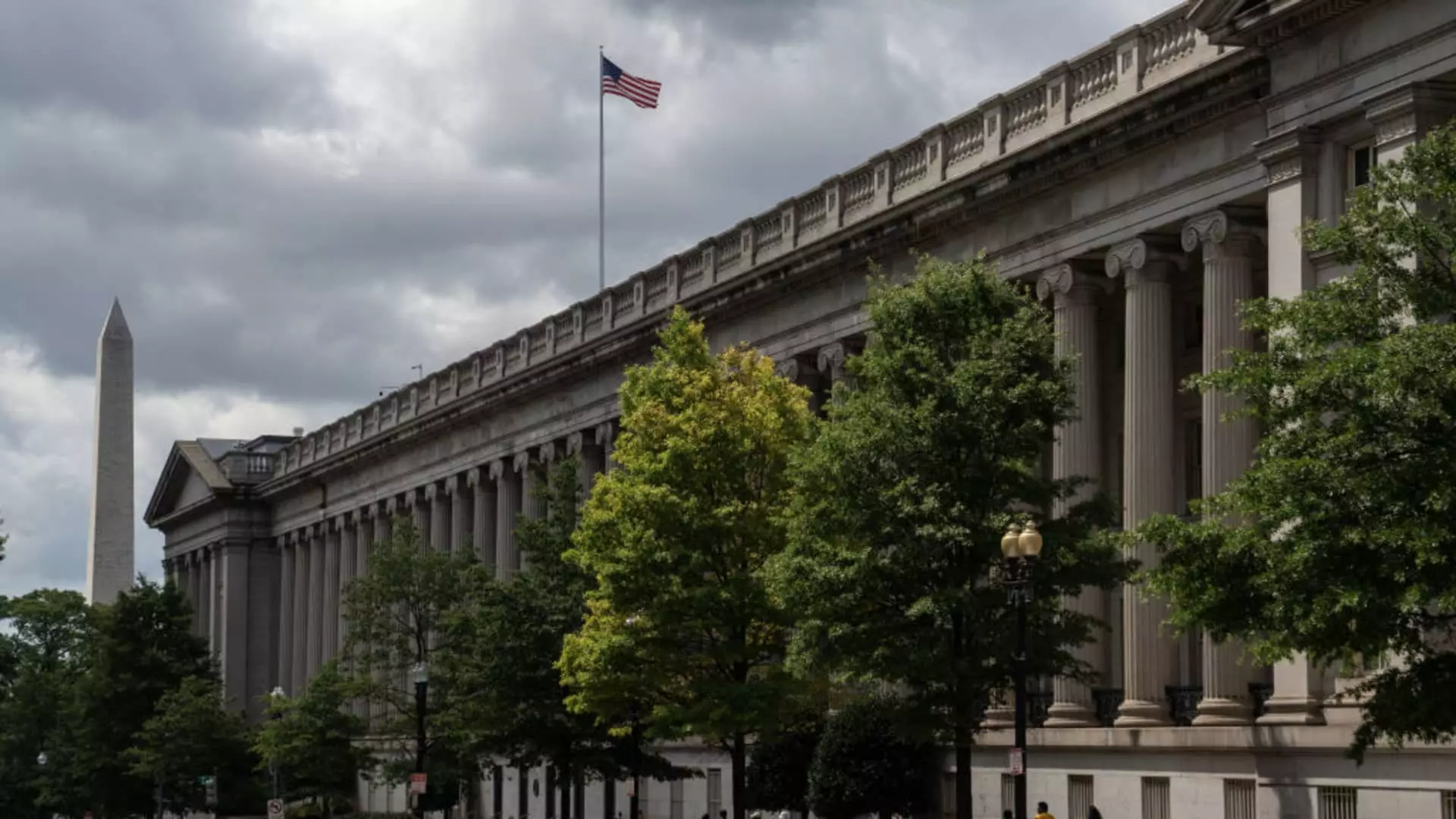As we navigate through the complexities of 2024’s financial landscape, fixed income investors face the daunting shadow of a bond market that is struggling to maintain stability. The ramifications of an extensive rate hike cycle, ongoing fiscal pressures, and unforeseen geopolitical events are converging, leading to a potential crisis that might upend conventional investment strategies. The impending reality of maturing U.S. debt, particularly short-term notes, heightens this concern. By 2025, nearly $3 trillion in U.S. debt will be reaching maturity, significantly complicating the debt rollover scenario as the Treasury Department seeks to optimize the duration of its debt portfolio.
This looming wave of maturing debt carries with it stark implications. Historically, the U.S. Treasury has favored a balanced issuance of debt types, keeping short-term bills at just above 20% of the total market. However, due to immediate cash flow needs and treasury financing battles, this percentage has surprised many by creeping higher over recent years. As Treasuries with shorter maturities roll over into longer tenures, market participants cannot ignore the pressures that this could inflict. If market absorption struggles amid already anticipated massive treasury issuance, we could find ourselves in hot water. The need to extend debt duration is not merely a tactical choice; it’s becoming a necessity.
Tom Tzitzouris, a seasoned voice from Strategas Research Partners, emphasizes a crucial point: the expectations surrounding the considerable issuance of Treasury bills may soon be outpaced by actual market dynamics. With the Federal Reserve’s recent adjustments to borrowing rates and the subsequent increase in yields, investors are now left grappling with the reality that the Treasury’s past actions align poorly with future market conditions. Tzitzouris articulates a scenario where cumulative deficits—projected to remain at or above the trillion-dollar mark beyond 2025—lead to an overwhelming issuance scenario, not merely of T-bills, but a broader spectrum of Treasury obligations.
The immediate implications of these mounting deficits cannot be understated. It’s critical to assess how the government’s financial policies are impacting the broader economy. The Treasury Department’s moves under pressure have led to accusations from various quarters, including congressional Republicans and notable economist Nouriel Roubini, suggesting that the ongoing issuance of short-term debt is an attempt to prop up an economy amidst an election cycle. This maneuvering could ultimately backfire, subjecting investors to heightened volatility and unpredictable returns.
The bonds have suffered significantly this year. The iShares 20+ Year Treasury Bond ETF (TLT) has seen a stark decline of over 11%, contrasting sharply with the S&P 500’s 23% gains. Investors, caught in this juxtaposition, must rethink their strategies as financial markets evolve. With rising yields following the Federal Reserve’s actions and a market that does not seem poised for immediate relief, the landscape appears grim. The Federal Reserve’s anticipated path of rate cuts has suddenly shifted, adding another layer of uncertainty for fixed-income investors already wary of the fluctuating market.
As 2024 progresses, the stressors of fiscal and monetary policy will define the contours of bond market recovery or crisis. The consensus seems to favor a defensive posture—investors may need to rethink their allocations, as traditional metrics may no longer apply. Those who remain exposed to the volatility of short-term notes risk substantial losses as traditional paradigms of safe-haven investments face existential threats under the pressure of unsustainable fiscal maneuvers.
The confluence of massive Treasury rollovers and the necessity for longer debt durations presents a problematic dilemma for investors. The future remains uncertain, but it is clear that adaptive strategies are essential to mitigate risks as we confront potentially turbulent financial waters ahead. Investors should brace themselves for a challenging year, marked by volatility, as the fabric of U.S. debt markets undergoes a significant transformation.


Leave a Reply